SLVAE57B February 2021 – October 2021 LM5050-1 , LM5050-2 , LM5051 , LM66100 , LM74202-Q1 , LM74500-Q1 , LM74610-Q1 , LM74700-Q1 , LM74720-Q1 , LM74721-Q1 , LM74722-Q1 , LM7480-Q1 , LM7481-Q1 , LM76202-Q1 , SM74611 , TPS2410 , TPS2411 , TPS2412 , TPS2413 , TPS2419
- Trademarks
- 1 Introduction
- 2 Reverse Battery Protection
- 3 ORing Power Supplies
- 4 Reverse Battery Protection using MOSFETs
- 5 Reverse Polarity Protection vs Reverse Current Blocking
- 6 What is an Ideal Diode Controller?
- 7 Automotive Transient protection with Ideal Diode Controllers
- 8 ORing Power Supplies with Ideal Diode Controllers
- 9 Integrated Ideal Diode Solution
- 10Summary
- 11References
- 12Revision History
8 ORing Power Supplies with Ideal Diode Controllers
The LM74700-Q1 combined with external N-Channel MOSFETs can be used in OR-ing Solution as shown in Figure 8-1. The forward diode drop is reduced as the external N-Channel MOSFET is turned ON during normal operation. The LM74700-Q1 quickly detects the reverse current and quickly pulls down the MOSFET gate, leaving the body diode of the MOSFET to block the reverse current flow.
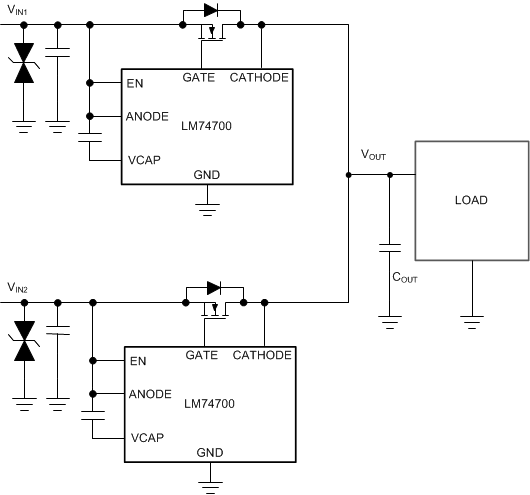 Figure 8-1 Typical OR-ing
Application
Figure 8-1 Typical OR-ing
ApplicationAn effective OR-ing solution needs to be extremely fast to limit the reverse current amount and duration. The LM74700-Q1 devices in an OR-ing configuration constantly sense the voltage difference between anode and cathode pins, which are the voltage levels at the power sources (VIN1, VIN2) and the common load point respectively. The source to drain voltage VDS of the MOSFET is monitored by the anode and cathode pins of the LM74700-Q1. A fast comparator shuts down the gate drive through a fast pulldown within 0.75 μs (typical) as soon as V(IN) – V(OUT) falls below –11 mV. It turns on the gate with 11 mA gate charge current once the differential forward voltage V(IN) – V(OUT) exceeds 50 mV.
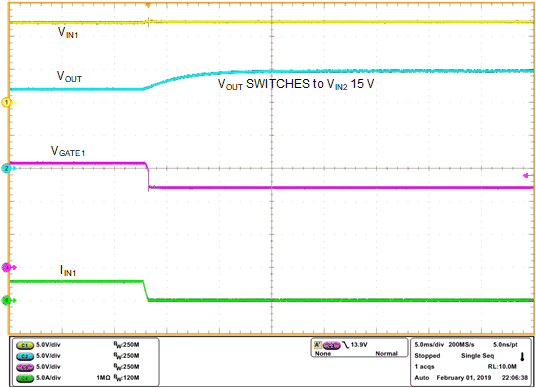
| Time (5 ms/DIV) |
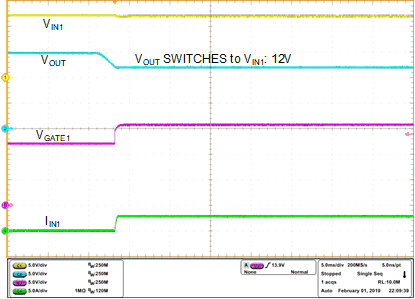
| Time (5 ms/DIV) |
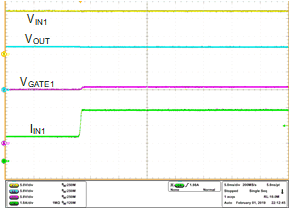
| Time (5 ms/DIV) |
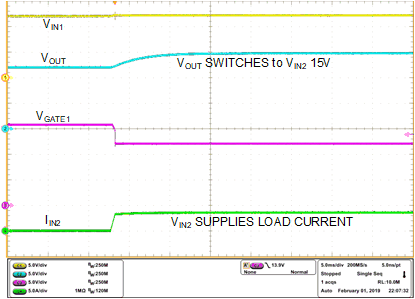
| Time (5 ms/DIV) |
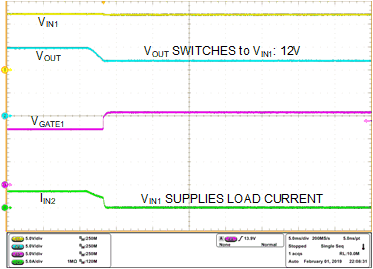
| Time (5 ms/DIV) |
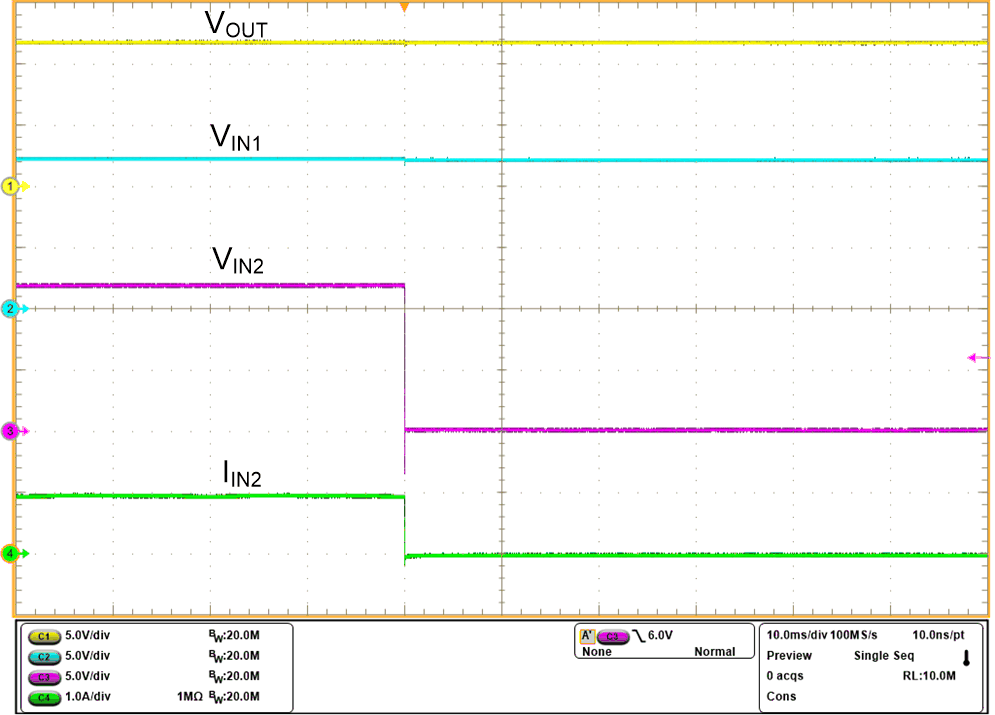
| Time (10 ms/DIV) |
Figure 8-2 to Figure 8-5 show the smooth switch over between two power supply rails VIN1 at 12 V and VIN2 at 15 V. Figure 8-6 and Figure 8-7 illustrate the performance when VIN2 fails. The LM74700-Q1 controlling VIN2 power rail turns off quickly, so that the output remains uninterrupted and VIN1 is protected from VIN2 failure.
Power dissipation and its associated thermal management issues of using a schottky diode are minimized due to the low forward voltage drop of ideal diode controllers. MOSFETs do not have leakage currents as high as a schottky diode at high temperatures and using MOSFETs reduces the reverse leakage loss. This improves overall efficiency and reliability of the system.
Load sharing concerns due to schottky diode difference in forward voltage and its negative temperature co-efficient are not present when using ideal diode controllers. Further, the linear regulation of forward voltage drop enhances load sharing between power supplies.